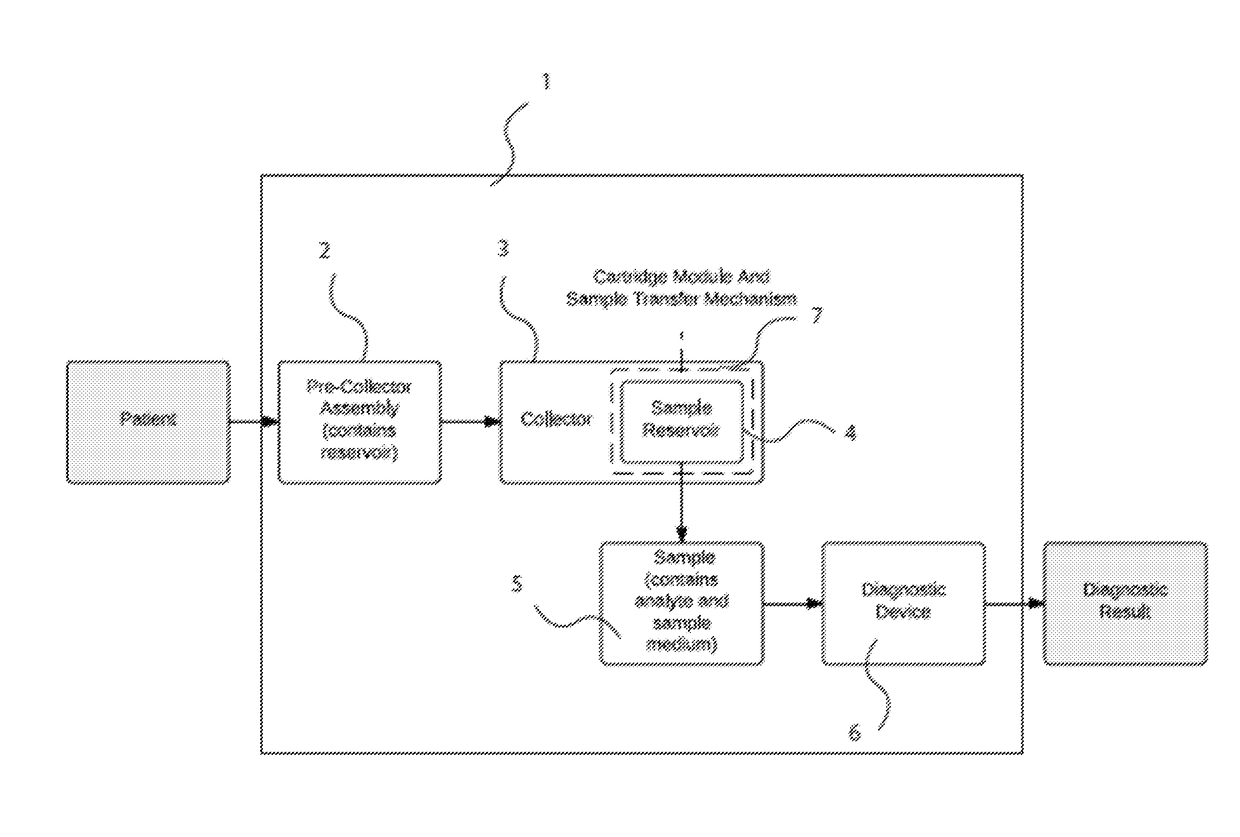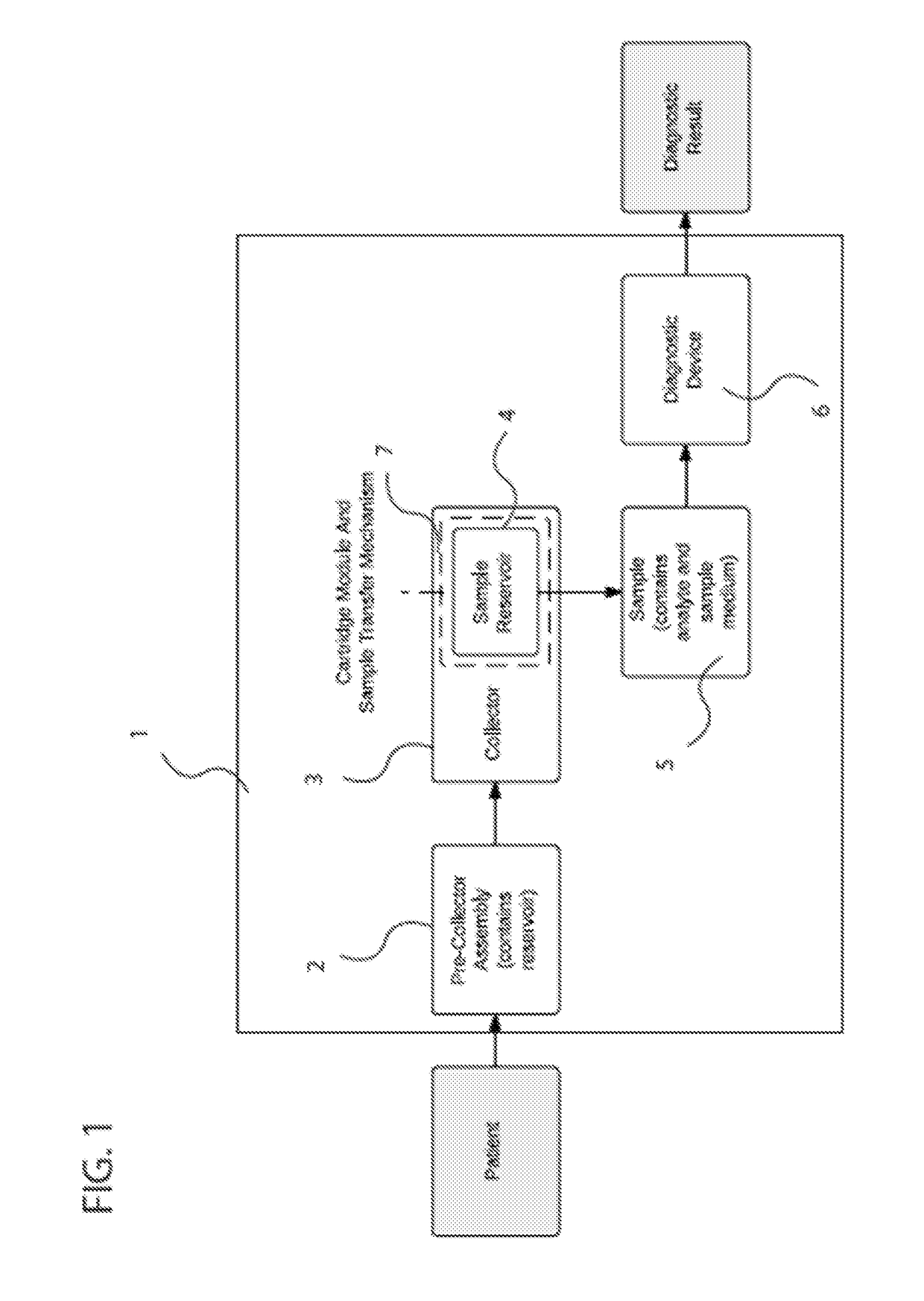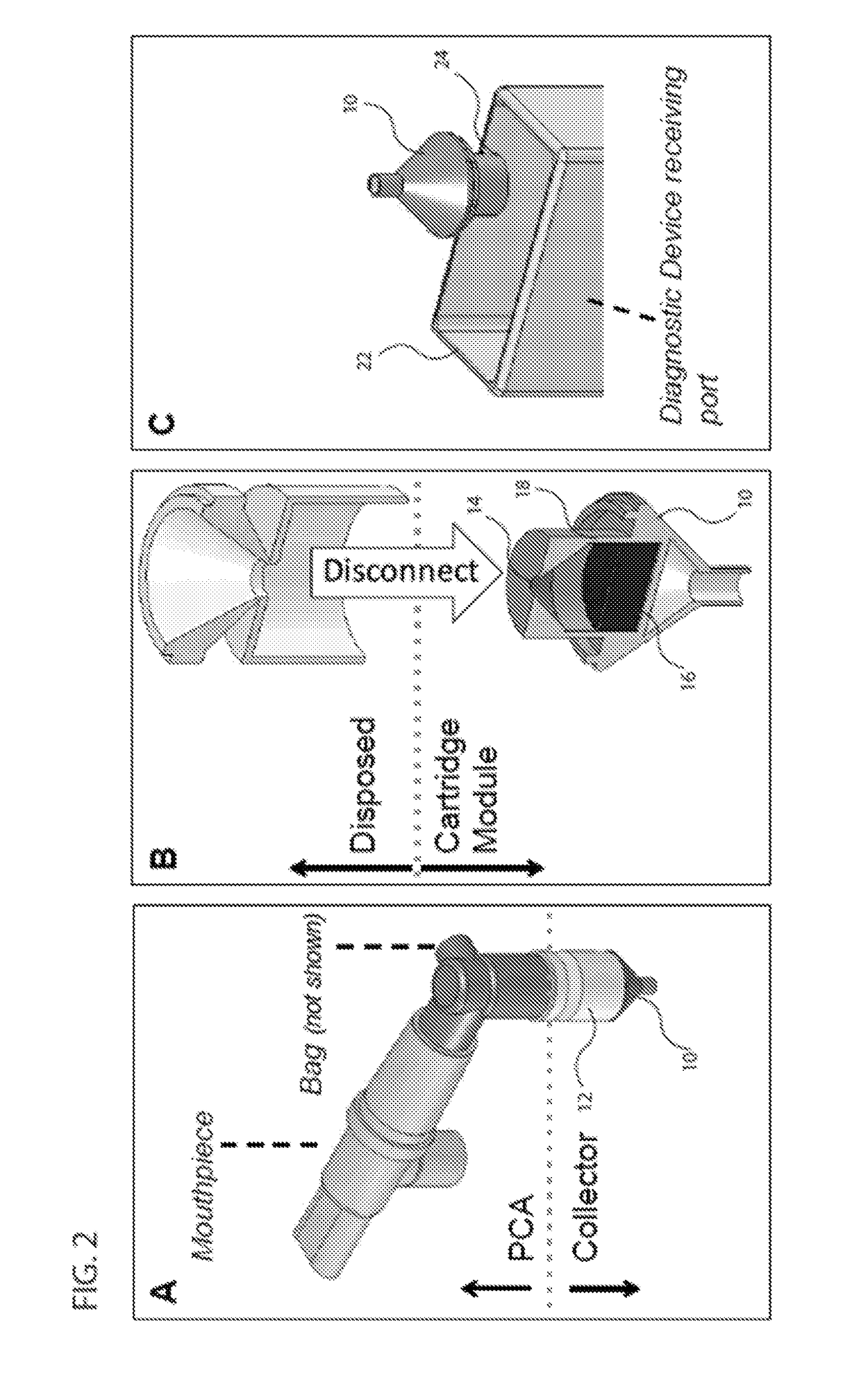System for breath sample collection and analysis
a technology for breath samples and systems, applied in the field of systems for collecting and analyzing bacteria or biological particles, can solve the problems of tb also posing a significant bioterrorism threat, complicating tb diagnosis and treatment, and boosting its threa
- Summary
- Abstract
- Description
- Claims
- Application Information
AI Technical Summary
Benefits of technology
Problems solved by technology
Method used
Image
Examples
example 1
Example Embodiment of the Sample Collection System
[0107]FIG. 13 shows one embodiment of a sample collection system that combines multiple aspects. The sample collection system (109) consists of a pre-collector assembly (108) and a collector (110). The pre-collector assembly includes a mechanism of managing flow from the patient depicted in the embodiment shown in FIG. 10c. Furthermore, in the embodiments the pre-Collector assembly includes a mechanism of excluding droplets >10 μm with an efficiency of >50% as depicted in FIG. 11. In this embodiment the pre-collector assembly consists of a T-junction (112) with three ends (114, 116, 118)—one end connecting to the mouthpiece (114), the second to a bag (116), and the third to the collector (118), although the bag and mouthpiece are not shown in FIG. 13. In addition, the embodied pre-collector assembly includes a one-way valve (120), which is made of a silicone flap (122) that rests on a plastic ring (123), which is inserted into the T-...
example 2
Improvement on Fennelly's Collection System
[0108]The exemplary sample collection system described above can be contrasted with the Andersen impactor, used in Fennelly's collection system, which was developed in 1958 for environmental sampling and, while adept at the collection of bioaerosol, was not designed for diagnostic detection of clinical samples. In particular, it has been shown that deposition of bacteria on selective media, such as 7H11 agar, structurally damages cells and can render up to 99% non-viable (See, e.g., Stewart et al., Applied and Environmental Microbiology, 61(4):1232-1239, 1995, the disclosure of which is incorporated herein by reference.) Furthermore, efficient extraction of PCR-ready DNA is impractical due to the large area of the agar plate. Finally, the setup is designed for research use and is impractical for clinical use; the impactor is placed in a large (˜20″ by 8″) metal chamber that hinders transport and sterilization. Exemplary embodiments of the s...
PUM
| Property | Measurement | Unit |
|---|---|---|
| velocity | aaaaa | aaaaa |
| angle | aaaaa | aaaaa |
| air velocity | aaaaa | aaaaa |
Abstract
Description
Claims
Application Information
 Login to View More
Login to View More - R&D
- Intellectual Property
- Life Sciences
- Materials
- Tech Scout
- Unparalleled Data Quality
- Higher Quality Content
- 60% Fewer Hallucinations
Browse by: Latest US Patents, China's latest patents, Technical Efficacy Thesaurus, Application Domain, Technology Topic, Popular Technical Reports.
© 2025 PatSnap. All rights reserved.Legal|Privacy policy|Modern Slavery Act Transparency Statement|Sitemap|About US| Contact US: help@patsnap.com



